It is a photographers nightmare to see precious and expensive camera equipment fall. I have seen it happen quite often and most of the times a tripod was involved. Fortunately it never involved my equipment. Perhaps it is due to luck, but I believe ten important guidelines helped a lot.
In my last article about setting up a tripod I explained what should be done before placing the tripod. Although most photographers probably use this easy way, there is a change these things are taken less seriously over time. This also applies for the ten guidelines I use when using the tripod. So, even if you know these rules, it can be valuable to be reminded once in a while. To be honest, I sometimes ignore my own guidelines. Just be aware of the possible risks that can be involved when you do.
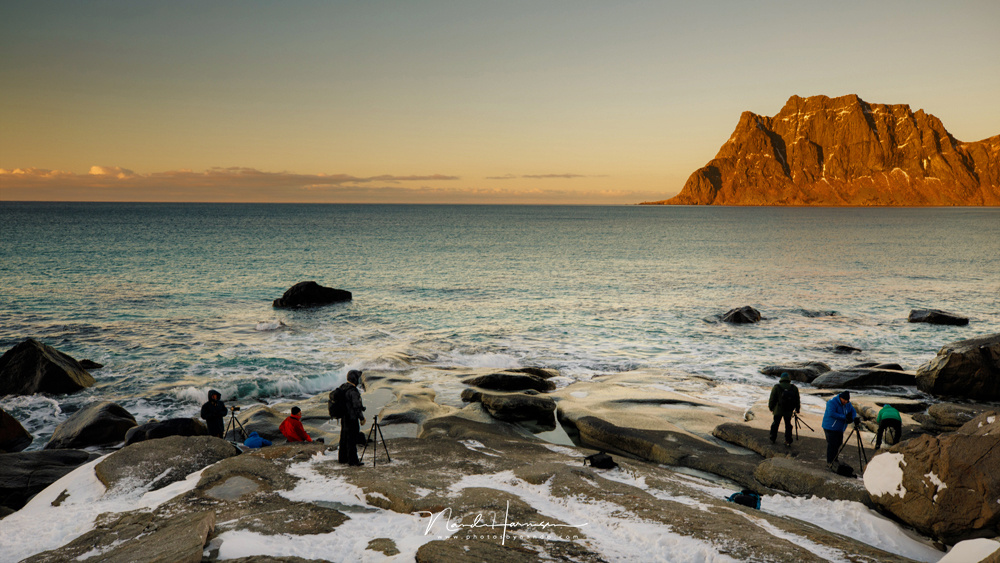
Good use of a tripod can safe your equipment, when working on an exiting location. I always warn the participants of my workshops about this like here at Lofoten.
1) Spread the Tripod Legs Until the Stopping Point
It is best is to spread the legs up to the stopping point. This prevents the legs from unintentionally opening further when the weight of the camera is placed on top. This risk will be even more when the legs are in a greater angle or on a slippery surface. Of course you can prevent the legs from gliding wider by placing it firmly in the mud or grass, or perhaps by placing the leg against a stone.
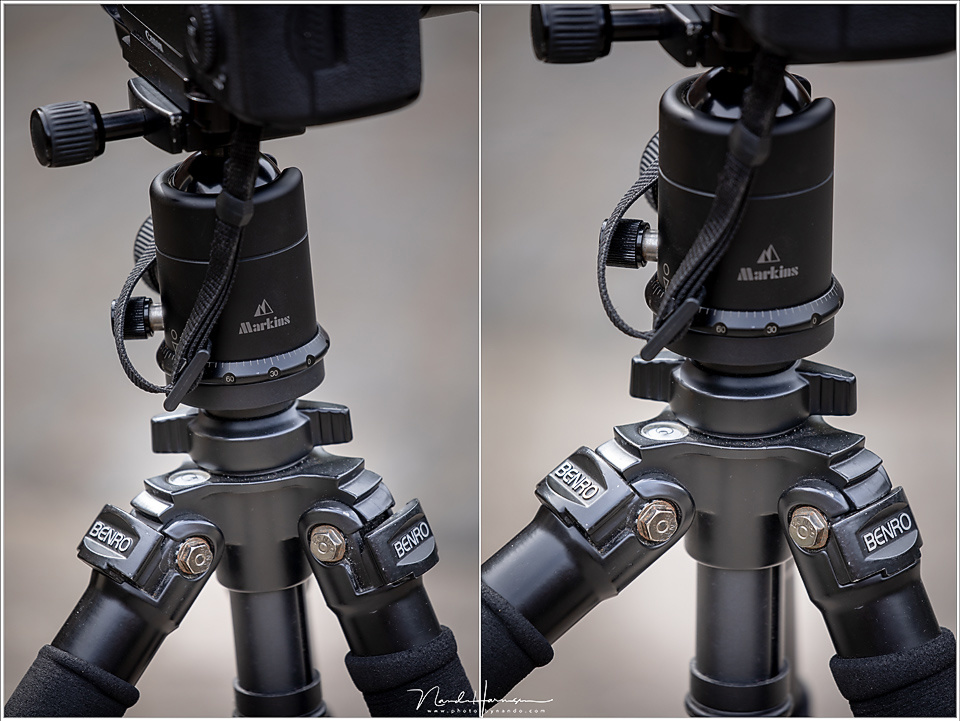
Spread your legs until the stopping point and make sure its secured. Left is wrong, right is correct.
2) Try to Level the Base Plate as Much as Possible
The base plate of the tripod should be as level as possible. If you don't do this, you increase the risk of tilting over. It does not have to be exact spirit level, but as much as possible.

Place your tripod not like this. Keep it level as much as possible

Although there is an uneven surface the tripod is placed level. This is the proper way.
3) Keep You Camera and Lens in Balance
By using a lens collar you balance your equipment as much as possible. This sounds evident, but I have seen people ignoring a lens collar just because they would have to change the quick connector plate from the camera to the lens, or just because they're lazy.
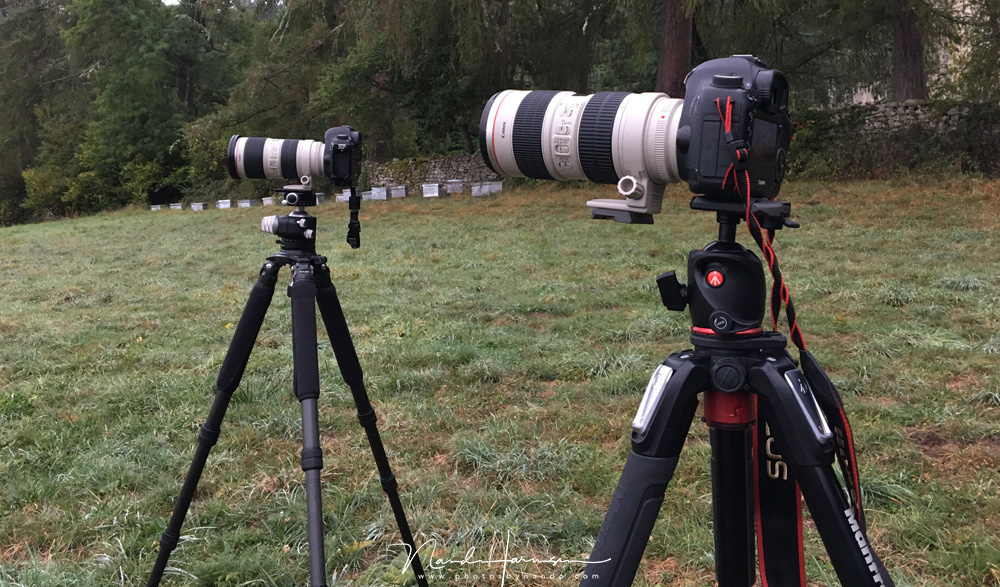
Can you image people can connect a camera onto a tripod like this? They do. The correct way is using the lens collar like the one in the back
When you are using the camera in portrait stand often, you have to tilt your camera, placing everything off center. In that case, try consider using a L-bracket. This way your camera stays much more center gravity.
4) Be Careful With Legs in Wide Angle Positions
When tripod legs can go wide, make sure your legs are not extended too much. It can be necessary sometimes, but you have to be careful. Extending tripod legs and placing in a wide angle can even decrease stability. The legs can get a springy effect and in the worst case scenario they break. When using a wide spread, try to avoid extended legs.
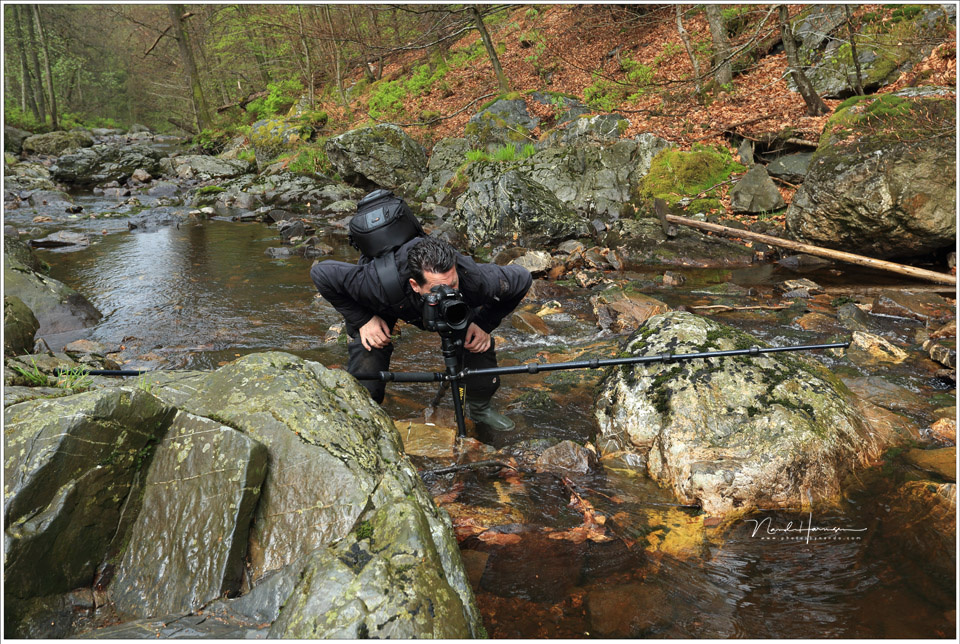
Being to lazy to retract the tripod legs ended up in this situation. This is not how it should be done (and this image is not staged, can you image?)
5) Try to Extend the Lowest Part of the Legs First
Although often it's advised to extend the thickest part of the tripod legs first, I would advise to extend the thin, lowest parts first. This way you don’t have to reach to the ground, or raising the tripod with camera on top, when adjusting the height of the tripod. Unless you have a really cheap tripod, most are stable enough even with extending lower legs first. But there is another reason for this. When you use your tripod in water or mud, the clips for extending the legs will be submerged, wet, dirty, and hard to reach.
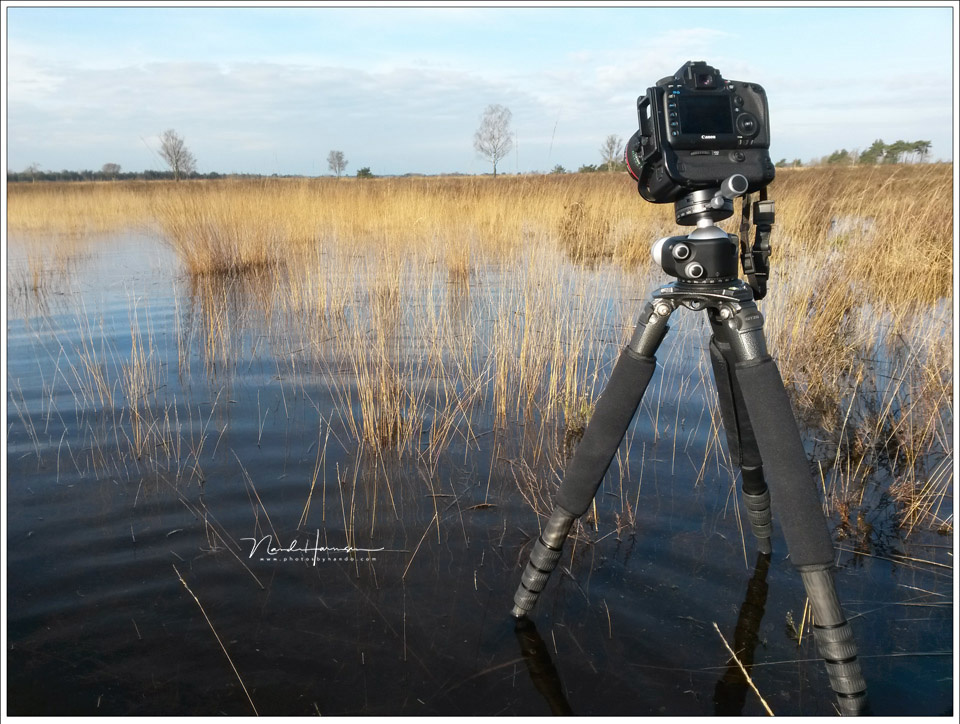
By extending the lower legs first, I prevented the locks from submerging. It is easier to adjust the length of the legs this way.
6) Try to Prevent Using a Center Column
You can use the center column to reach that bit of extra height, which can be necessary sometimes. Using a center column decreases stability a lot. Think of it like a flag pole, and imagine the movement it can have in a breeze. Your heavy equipment on top of a pole will make the movement even larger. Try to prevent using the center column as much as possible.

Using a tripod like this is not very wise. Don't use the center column unless you really really need to.
When you use a traveler tripod, you probably will need the center column more often because the smaller size and weight of the tripod, which can be more important. In that case always be aware of the decreased stability of your setup.
7) Use Disks in Loose Sand, Snow, or Mud
When using a tripod in loose sand, in snow, or on the beach, you can have an unstable surface. Especially at the beach when the surf is displacing the sand constantly, the tripod will loose its stability with every wave. By enlarging the surface of the legs you can avoid that. Some tripods have special disks for that, but you can also use CDs or DVDs, or better still, drinking cups. Just place every leg into a cup and you have more stability.
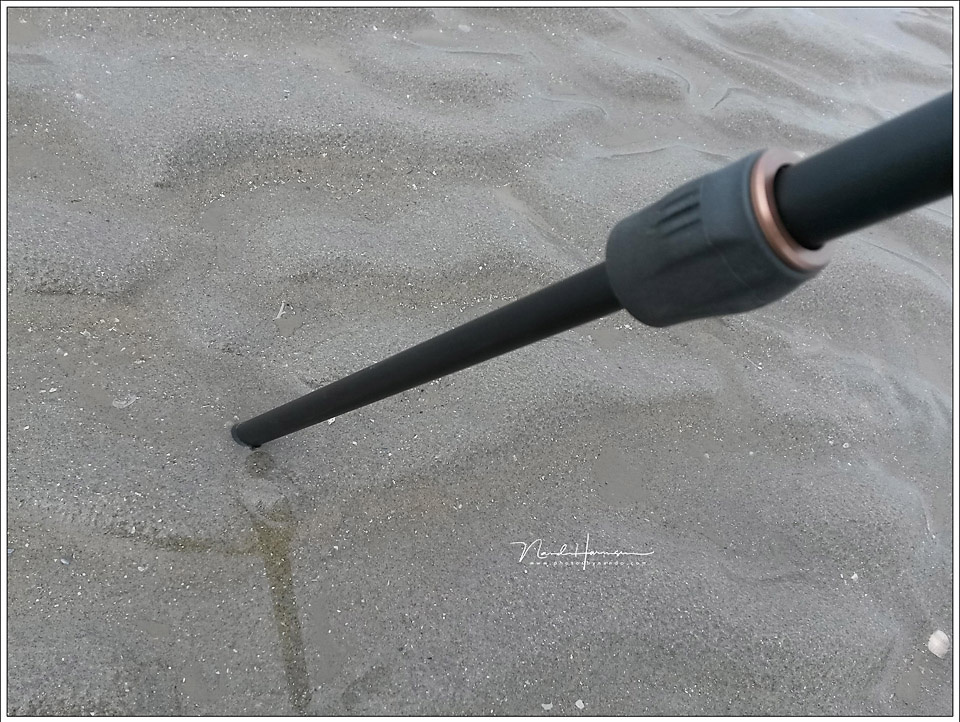
The legs sink into the wet sand. This won't do any good for the stability.

My tripod comes with these nice disks. But you can also use a CD or a drinking cup.
8) Place Two Tripod Legs Against the Wind
When using a tripod in strong wind you can place two tripod legs against the wind. This way the third leg is placed with the wind, which will make tilting over much more difficult. Nevertheless it is wise not to leave the tripod unattended in these situations. A gust of wind can knock over the heaviest of tripods. This positioning of tripod legs works also in strong water currents and in the surf on the beach. Combine with legs that are in a wider angle for extra stability, but be careful not to extend the legs like I mentioned in point 4.
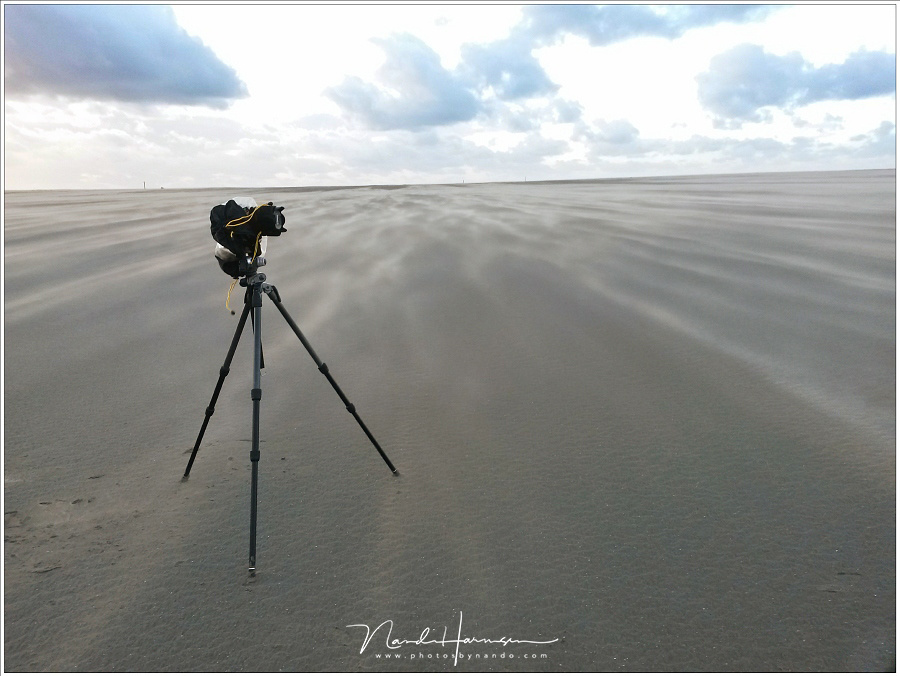
Standing firm in a storm. Two legs into the wind, one with the wind brings most stability. But never leave the tripod alone.
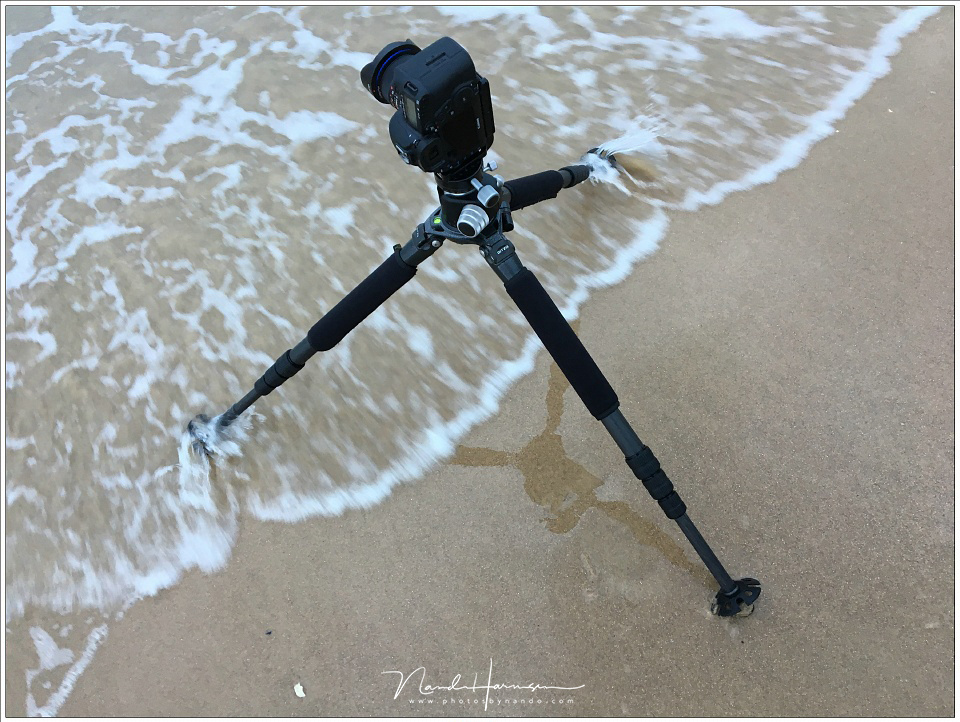
A perfect example how to place the legs of a tripod when it is standing in the wind or in a stream.
9) Use the Hook Underneath the Center Column Wisely
The hook that can be found at the bottom of a center column, or underneath the base plate, can be used for extra weight. Your heavy camera bag can pull down the tripod firmly on the ground. But be careful, make sure the total weight (bag and camera) is not exceeding the maximum carrying weight. Another problem that can occur is the swinging of a bag in the wind. It can introduce even more vibrations.

Use the hook to cary your bag. It seems to pull down the tripod for stability, but be careful it doesn't swing in the wind, or when you bump into it.
A good way of weighing the tripod down, is a rope connected to the hook. Pull the rope down and step on it. This way you are pulling the tripod down without any risk.
10) Watch out for the Maximum Carrying Weight
Your tripod has a maximum carrying weight. You should not exceed this. Best is a tripod that can carry the heaviest of your equipment and then some more. Always remember, the carrying weight of a tripod is something else than the carrying weight of a ball head or 3-way head. If your ball head can hold up to 40 kilos, it does not mean your tripod can.

Make sure your tripod can carry the weight and remember, it doesn't have to be the same as the maximum carry weight of a ballhead.
An Extra Guideline
Last but not least a warning. Call it guideline number 11: never walk around with your camera attached to your tripod. I do it too often because I know the camera is secure, but I strongly advise against it.

Walking around with your camera attached to your tripod. If you do, it is at your own risk, but make sure your camera is really secured (credit: Hetwie (www.hetwie.nl))
Do you have extra guidelines? Please share it in the comment below.









Re not walking around with the camera attached... Why not? What am I missing?
None of the contact points are designed for that angle, especially with the added stress of bouncing motion.
I think you can imagine what will happen when the camera is not attached properly, or when the ball head is not secured? That is why I strongly advise against it.
Also, it’s all too easy to forget the thing on your shoulder and turn around when seeing something, not a good idea when there are for example trees around.
I occasionally end up doing this when I need to move quickly. One precaution I take when doing so is I make sure to put my sling strap on so that, in the event the quick plate connection fails, the camera will at least get caught on the strap and not crash to the ground.
I slipped out on wet rocks while holding the tripod with the camera attached. The camera hit a rock, the lens came off the camera and was smashed.
That is painful. Of course a camera can also damage when you fall while wearing a camera with a strap. Wet rocks is always dangerous
Normally I put the camera back in my belt bag after taking a shot. This prevents damage in 99%.
So true
Completely agree with #5. I've never understood the counter advise, assuming of course, you have a good tripod.
Why is there a watermark on every photo?
Good writeup. I bet you would leave out the most important advice. But you mentioned it at the end, though. Walking with tripod, camera attached caused my smashed lens. I walked on wet rocks.
That is a painful lesson.
nº3: Thomas Heaton reviewing the d850+70-200 2.8 + the gfx 50r in portrait mode
I just saw a little bit of that video, there were a lot of comments on how he handled the GFX. Did he really used it like that?
Same thought! I guess he relied strictly on the received test equipment & this would "solve" the Fuji thing(not the Nikon one)
I liked the videos of Thomas, but lately he is a bit lost and too much camera-choosing-problems. As if another camera would make a better picture.
Remove the strap when shooting on tripod. You're trying to stabilise your camera to get sharper shots, but would let the strap fly all over the place and "cancel" the stabilisation of the tripod? :)
Indeed. That is a good addition. I don't use straps on my cameras, so then its easy to forget.
I suggest, especially when using a big lens, that the camera lens should be directly over a leg. If you have the camera set up with that much weight between two legs, there is a good chance that the weight will cause the tripod to tip with the slightest of provocations.
I learned this early on with astronomy gear. Go to a star party and look at how those that use tripods have their scopes set up. In the home position, the scope is over a leg, not between two legs.
While this video is a really big mount and tripod, you will note the position of the counterweights. At about the 4 minute mark, you'll see it with a rather large reflecting telescope mounted.
https://www.youtube.com/watch?v=gYQMapsyIXE
When you have your large and heavy lens connected with a lens collar, you don't have to. Then the center of gravity is right above your ball head. But if you don't have a lens collar, then it is wise to do so.. Look at the picture in point 3 or below, with the enormous 800mm on tripod. It is perfectly in balance
I see that in the image above, the front of the lens is right over a leg for both cameras. And you may be correct that it doesn't need to be. I prefer not to chance it. That's about $13,000 worth of lens there.
True, but if I turn the lens to the left or right, I don't replace my tripod for that. But if you would feel beter if a leg is underneath the lens, you must do so. A safe feeling is important.
(I had to return the lens after this shoot... too expensive and I really don't need such a focal length ;) But it was fun using it)
Thanks for all of the elucidating responses!
You're welcome
For me tip #1 should have been: "Tip 1 Use your tripod as often as possible!"
I always have one with me in the car, but I leave it in the car.
It's one of those things that I pledge myself to use more, but never actually do so.
I kind of hate how it adds extra weight to my bag and it's so clumsy to me.
Urgh, any tips on actually using the tripod more often? :p
Perhaps you should look at my article about setting up a tripod, when you talk about clumsiness. And yes, it is extra weight, but just think of it being a fitness exercise ;).
It's all great advice, if a bit elementary.
I've carried a tripod with the camera -- and a 600mm lens -- attached over my shoulder with no problem many times. The ONLY time I had a problem with a camera coming off was while the tripod was upright, legs spread. I'd attached the camera, but did not have the quick release properly engaged. When Iet go of the camera, it fell to the concrete. Fortunately, the only thing damaged was the UV filter on the lens. Everything else survived fine. Of course, I now have a strap attached to the tripod that clips to the camera to tether the two together, so even if I throw it over my shoulder, the camera/lens isn't hitting the ground.
Sometimes the elementary things are taken for granted, or are even forgotten. As I have mentioned; it is good to get a reminder now and then. Wouldn't you agree. And there are of course new photographers that need elementary advise in the first place.
You experienced how easy it is to have an accident with falling equipment. I am happy to hear the damage was limited. I hope your strap is short enough to prevent a hit to larger boulders or rocks next to you, or it doesn't swing to a tree or concrete wall, if the quick release fails again.
I make a habit of wrapping the camera strap around the top of the tripod when I walk around with the camera attached to it.